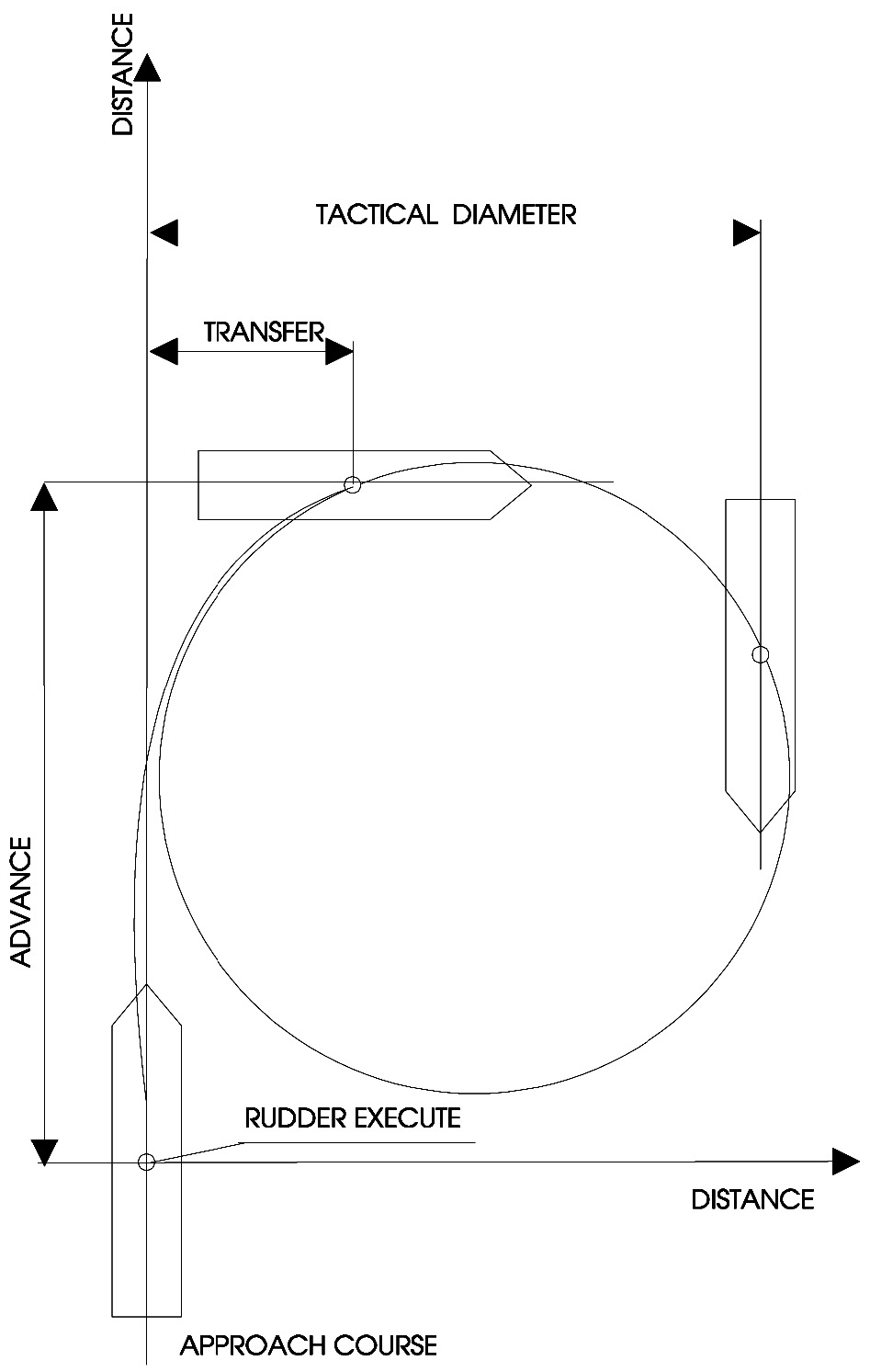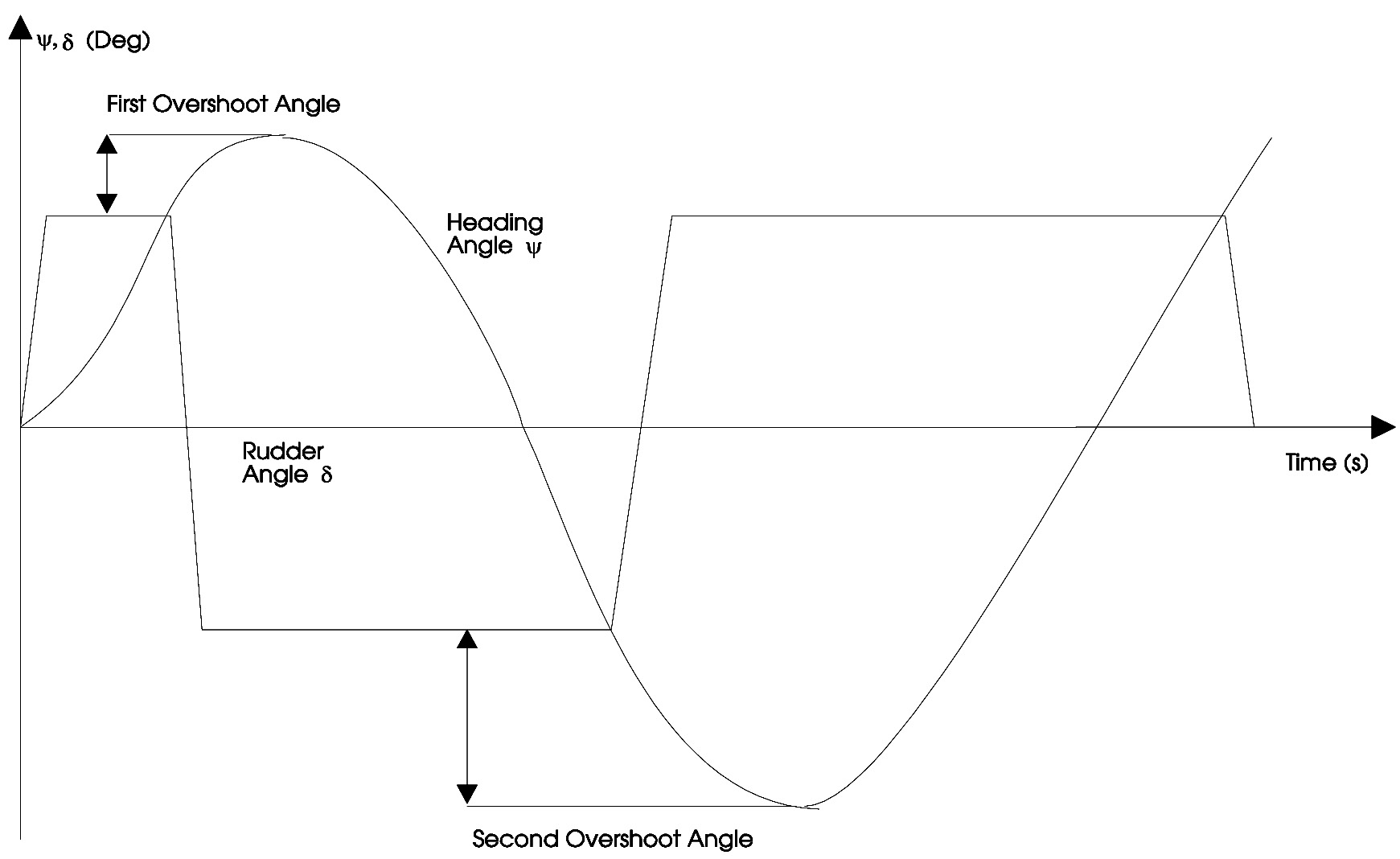

Manoeuvring tests
The full-scale trials conducted in order to evaluate such performance of a ship as turning, yaw-checking, course-keeping and stopping abilities. Manoeuvers required by IMO standards include turning circle, zig-zag and full astern stopping tests. When trials are conducted in condition other than full load, manoeuvring characteristics should be predicted for trial and full load conditions using a reliable method (i.e. model tests or reliable computer simulation) that ensures satisfactory extrapolation of trial results to the full load condition. Unfortunately this is still neglected by many shipyards and classification societies.
- Full astern stopping test, crash stop – Full astern stopping test determines the distance along the path described by the midship of a ship measured from the position at which an order for full astern is given to the position at which the ship stops.
Crash-stops from full speed are nautically not sensible as turning usually offers better avoidance strategies involving shorter distances. Therefore stopping manoeuvres are recommended at low speed, because then the manoeuvre is of practical interest for navigation purposes.
Single-screw ships with propellers turning right will turn to starboard in a stopping manoeuvre. Since according to international nautical conventions, collision avoidance manoeuvres should be executed with starboard evasion, single-screw ships should be equipped with right-turning fixed-pitch propellers or left-turning CPPs.
- Man-overboard manoeuvre (Williamson turn) – The manoeuvre used to search for a man overboard. It brings the ship on opposite heading and the same track as at the beginning of the menoeuvre. The rudder is laid initially hard starboard, than at e.g. 60° (relative to the initial heading) it is laid hard port, and at, e.g. –130° to midship position again. The appropriate angles (60° and –130°) vary with each ship and loading condition and have to be determined individually so at the end of the manoeuvre the deviation in heading is approximately 180° and in track approximately zero.
- Pull-out manoeuvre – After a turning circle with steady rate of turn the rudder is returned to midship. If the ship is yaw stable, the rate of turn will decay to zero for turns both port and starboard. If the ship is yaw unstable, the rate of turn will reduce to some residual rate of turn. The pull-out manoeuvre is a simple test to give a quick indication of a ship yaw stability, however requires very calm weather.
- Turning circle manouevre – Starting from straight motion at the test speed, the rudder is turned to 35° or the maximum rudder angle permissible and kept at this angle, until the ship has performed a turning circle of at least 540°. The trial is performed for both starboard and port side. The main information obtained from this manoeuvre consists of tactical diameter, maximum advance, transfer at 90° change of heading, times to change heading 90° and 180°, transfer loss of steady speed.
- Zig-zag test – 10°/10° zig-zag test is the manoeuvre where a known amount of helm (10°) to either side when a known heading deviation (10°) from the original heading is reached. The test yields initial turning time, yaw checking time and overshoot angle. After a steady approach the rudder is put over to starboard (first execute). When the heading is 10° off the initial course, the rudder is reversed to the same rudder angle to port (second execute). After counter rudder has been applied, the ship continues turning in the original direction (overshoot) with decreasing turning speed until the yaw motion changes direction. In response to the rudder, the ship turns to port. When the heading is 10° off the initial course, the rudder is reversed again to starboard (third execute). This process continues until a total of, e.g., five rudder executes have been completed.
20°/20° zig-zag test is performed using the same procedure with 20° rudder angles and 20° change of heading.
Further readings: Resolution MSC.137(76) Standards for Ship Manoeuvrability, Circular MSC/Circ.1053 Explanatory Notes to the Standards for Ship Manoeuvrability.ABS Guide for “Vessel Maneuverability” (2006), can be downloaded from www.eagle.org

